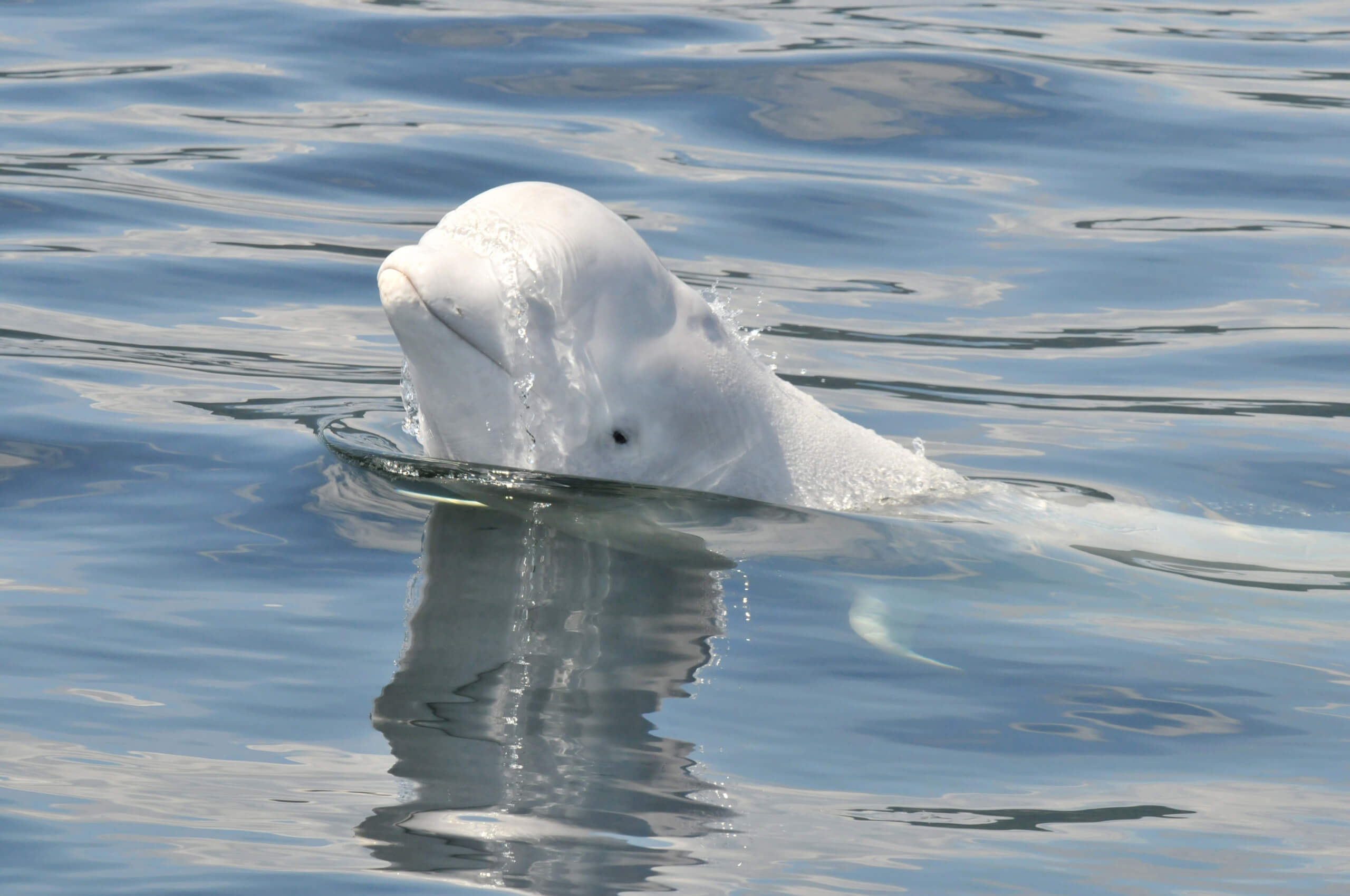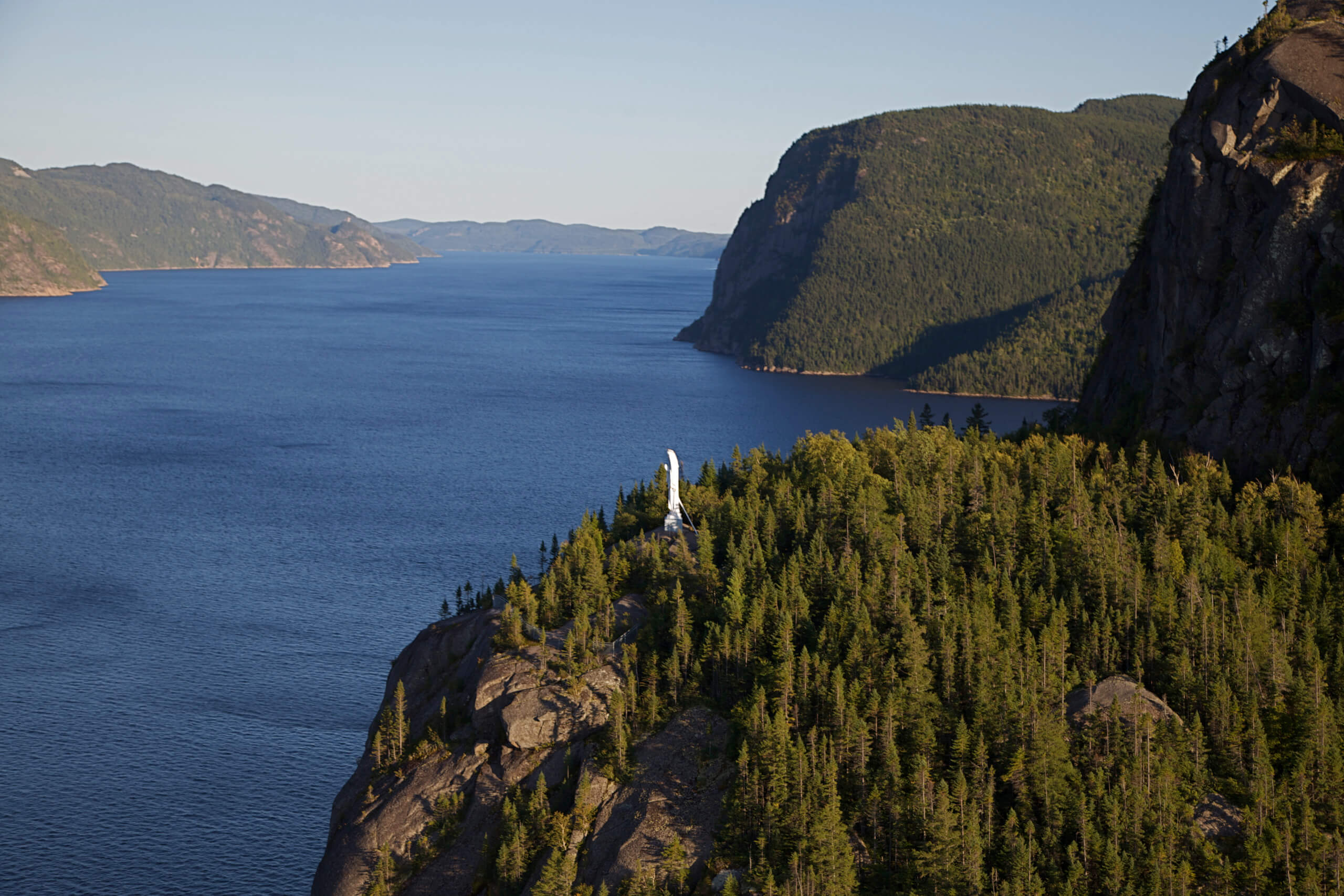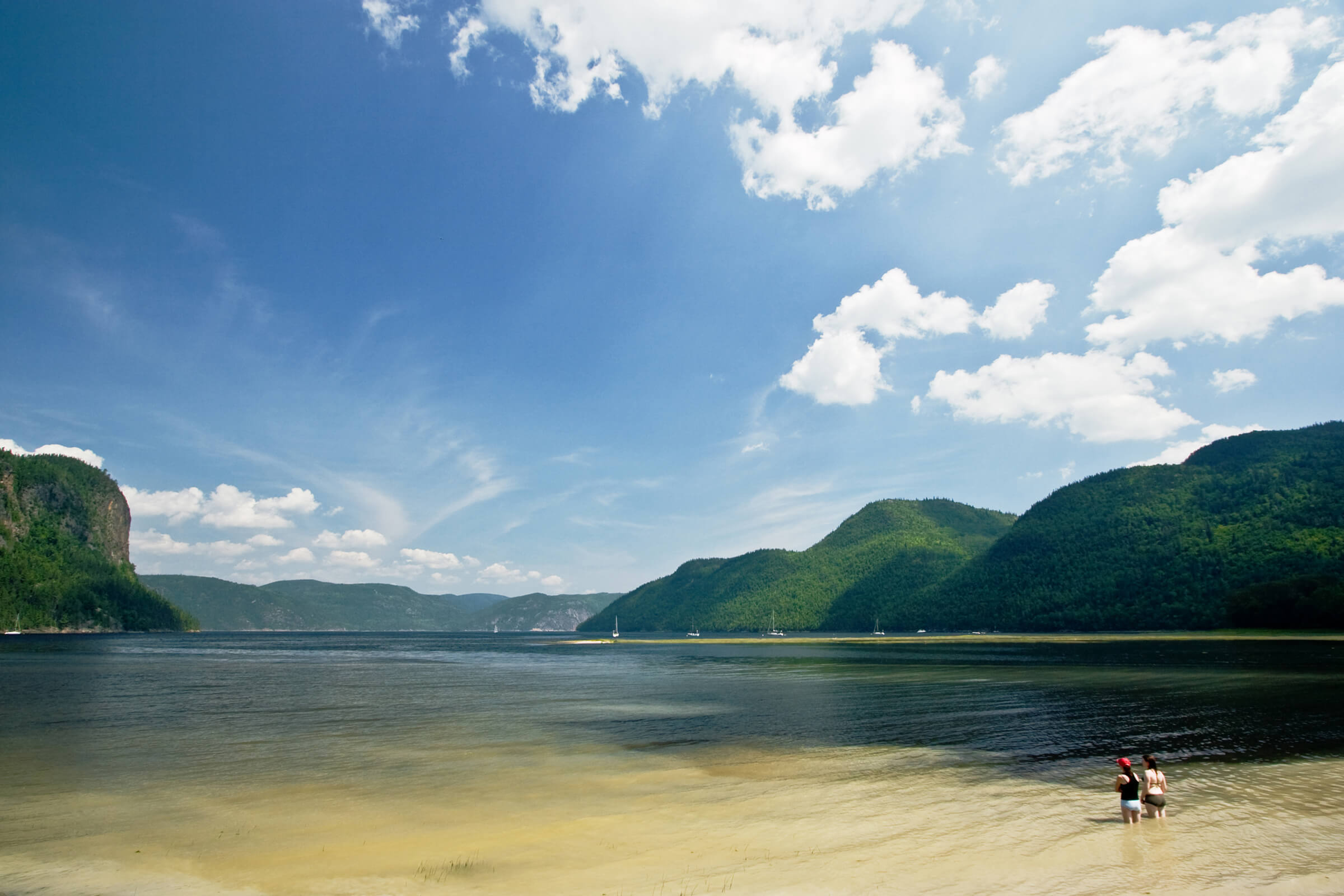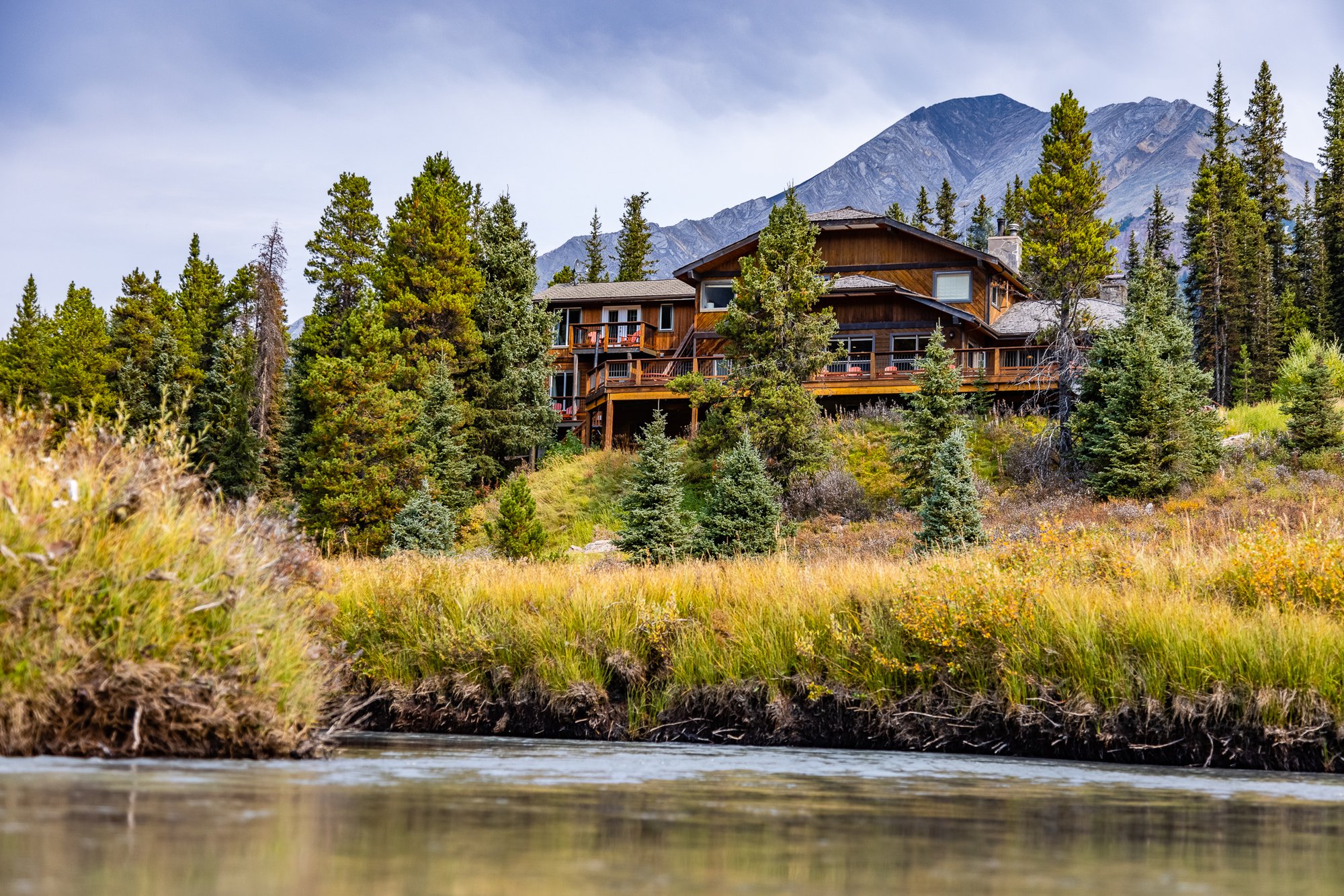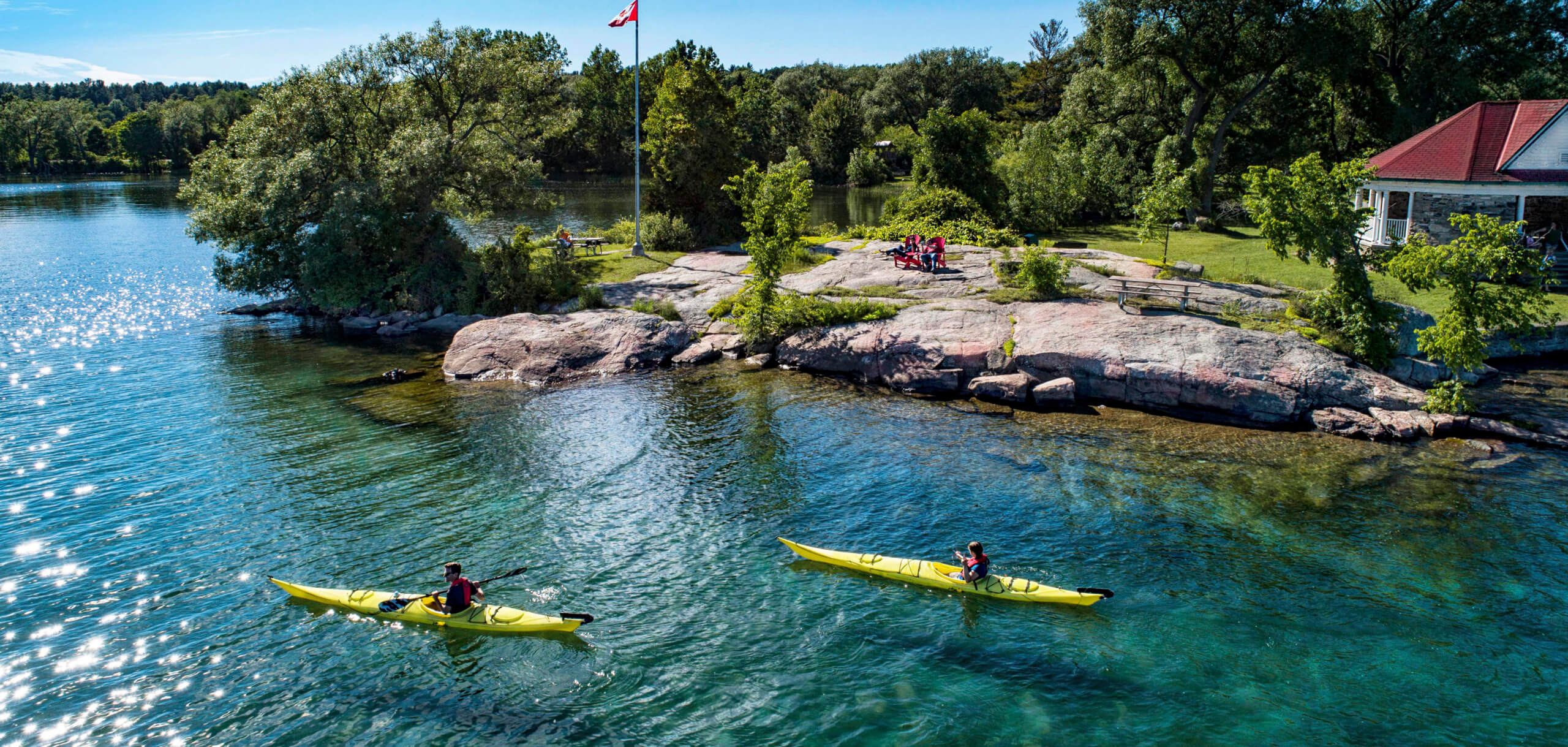Navigating The Saguenay Fjord
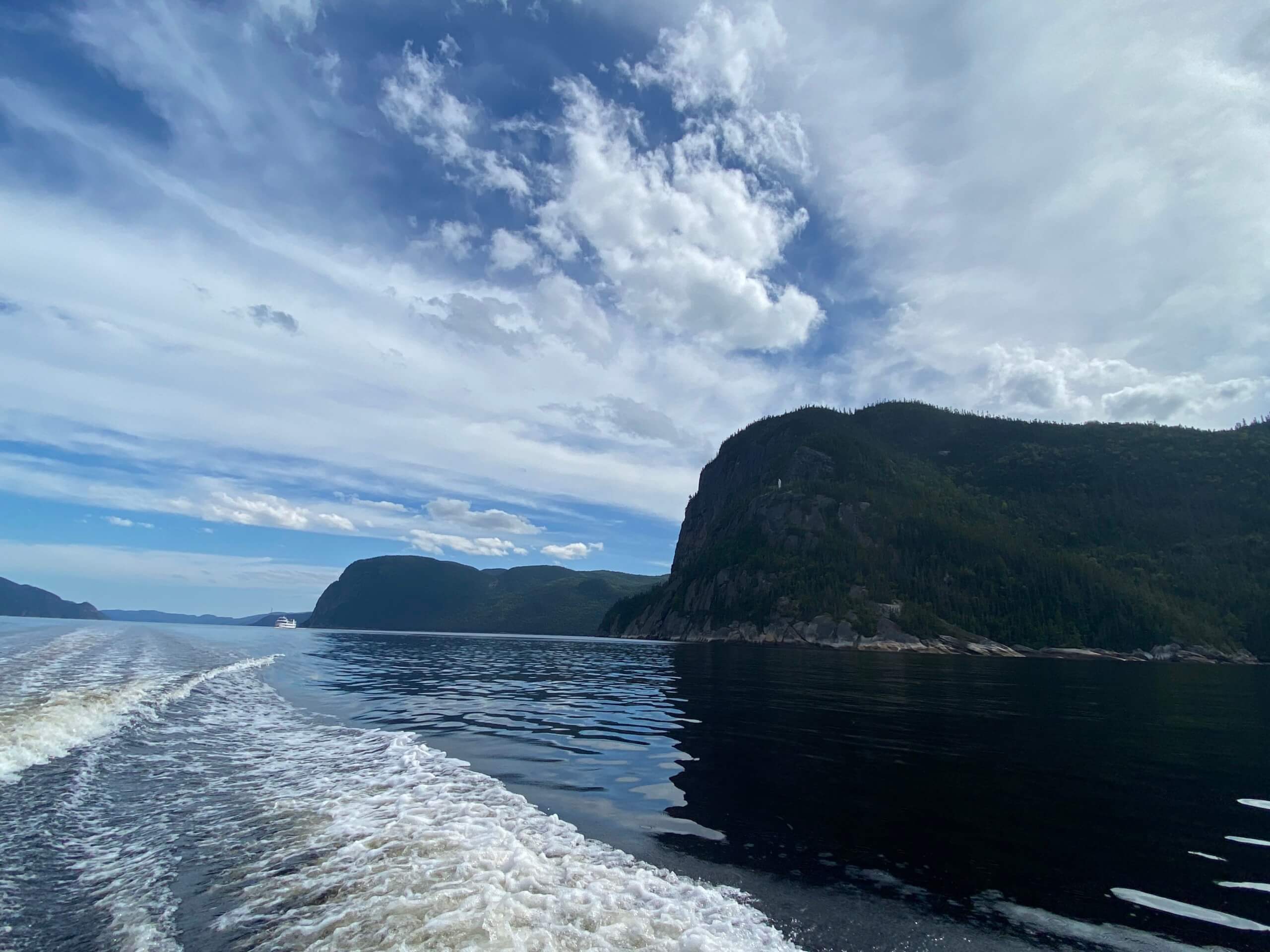 At once a sea and a river, Québec’s Saguenay Fjord is a place of dizzying cliffs, wide water vistas and abundant eco-diversity. At 105 km long, it is one of the world’s longest fjords and one of the only ones on earth that releases its water into an estuary, not an ocean.
At once a sea and a river, Québec’s Saguenay Fjord is a place of dizzying cliffs, wide water vistas and abundant eco-diversity. At 105 km long, it is one of the world’s longest fjords and one of the only ones on earth that releases its water into an estuary, not an ocean.
Located just 2.5 hours east of Québec City, the Saguenay is a spectacular place to visit if you love nature, beauty and marine wildlife.
Related: Read about Québec’s Charlevoix region in our post about the spectacular mountains and the Isle-aux-Coudres.
The Saguenay Fjord: What makes it so special
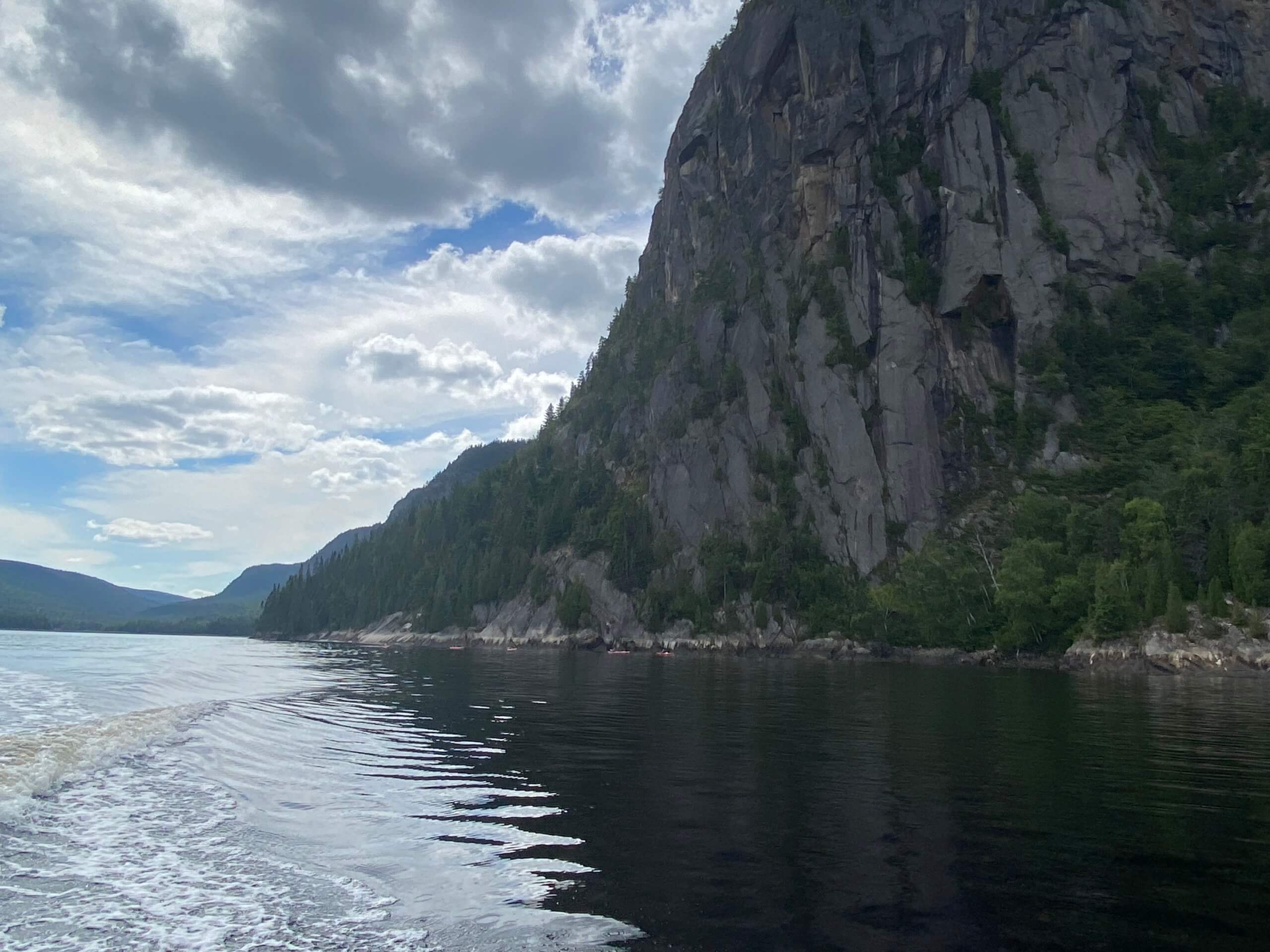
Carved by glaciers thousands of years ago, the Saguenay Fjord is a deep valley lined with high cliffs of Precambrian rock and flooded by two different sources of water: the saltwater of the Atlantic that comes in during each tide and the freshwater of the Lac Saint Jean watershed that floats in a thin layer over the top.
While the Saguenay River starts further up, the actual fjord begins at Saint-Fulgence and runs for more than 100 km until it reaches the St. Lawrence. About 2 km wide in most parts, its depths reach 275 metres and the highest cliffs soar 500 metres above.
Flora & Fauna of the Saguenay
Much of the fjord’s banks and waters are protected by the Parc national du Fjord-du-Saguenay, which runs in broken sections around both sides of the fjord.
Wolves, black bears, Canada lynx, beaver and moose live in the park’s forests, which are made up mostly of balsam fir and yellow birch with some hardwood stands in the valleys. At the highest peaks of the cliffs, the flora is arctic-alpine. Peregrine Falcons, a species at risk, nest in the cliffs.
But the fjord’s most famous resident is found in the water. Approximately 900 beluga whales live year-round near the mouth of the Saguenay. During the warmer months, they share the nutrient-rich waters with many other whale species including the minke whale. In the St. Lawrence Estuary, even more marine species — including the enormous blue whale and the humpback — gather annually and can be observed on whale watching expeditions. Marine life is protected not just by the provincial park but also by the adjoining national Saguenay-St. Lawrence Marine Park.
Stops along the Saguenay Fjord
Exploring the Saguenay Fjord can take many forms: hiking the dizzying cliffs and some of the hundreds of kilometres of trails that run along the banks; getting out on the water in a kayak, Zodiac or boat; visiting the picturesque villages that sit along parts of the fjord; participating in one of the many adventurous activities such as climbing a Via Ferrata.
Bonjour Québec has a tourist road trip called the Fjord Route that circumnavigates the fjord. We followed part of this route on our most recent adventures and here are some of our favourite stops.
Tadoussac:
With a big beach, great dining options and access to both the fjord and the St. Lawrence estuary, the historic town of Tadoussac is the perfect entry point to an adventure on the Saguenay. From here you can take one of the many boat or Zodiac cruises to see whales. Most cruises will go out on both the St. Lawrence and into the mouth of the Saguenay. On our 3-hour boat cruise, we saw minke whales, harbour seals and dozens of belugas.
If time allows (ours, unfortunately didn’t), you can also see belugas from shore at the Baie Sainte-Marguerite during the summer months. The bay is regularly visited in July and August by female belugas with their young. The trail is 6 km return and there is an observation deck by the water. Bring binoculars.
L’Anse-de-Roche:
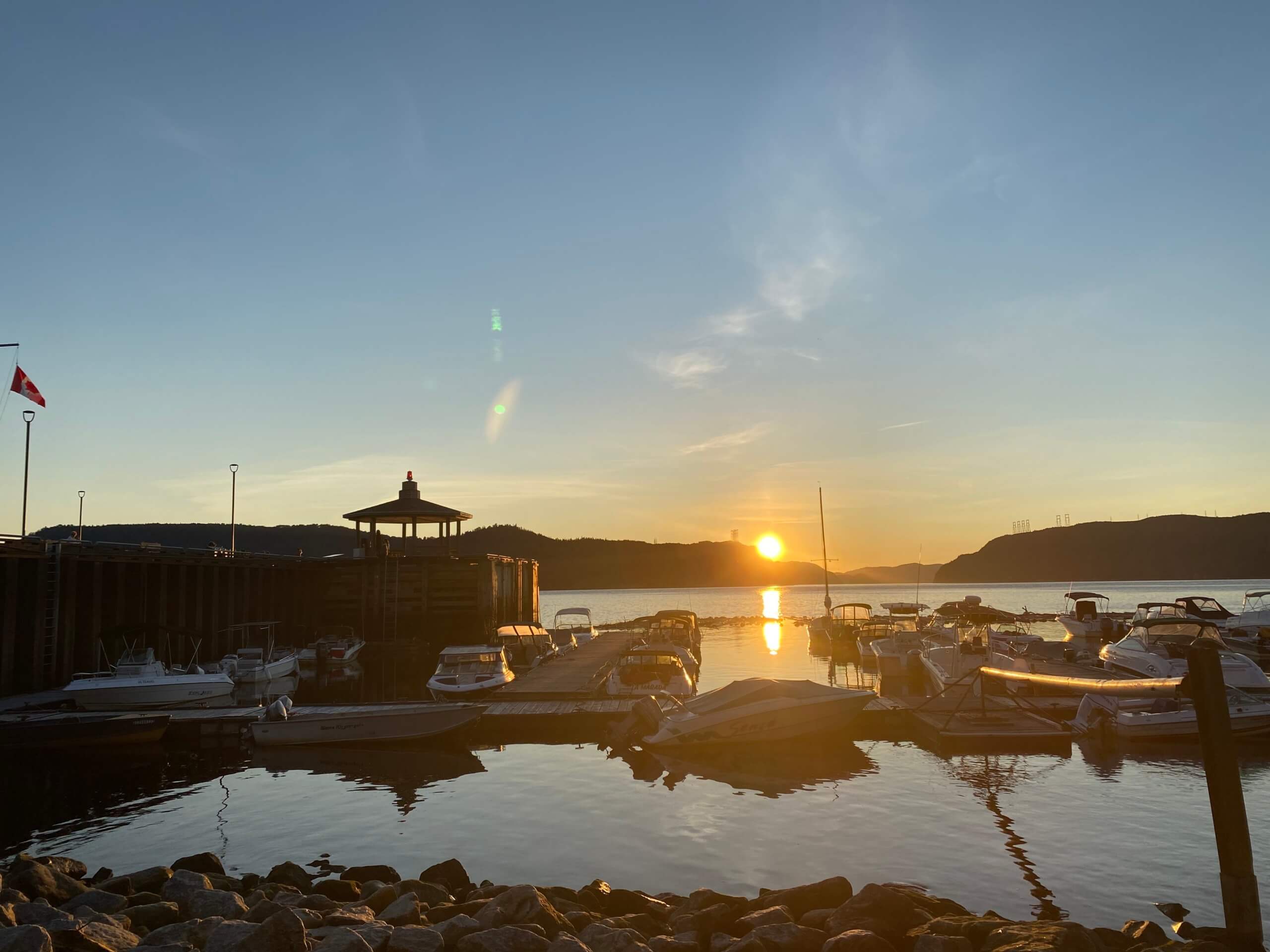
If you arrive in the summer, you may just be treated to one of the musical nights where local musicians play in the gazebo along the pier as the sun sets. We just happened upon such a night. Magical.
Sainte-Rose-du-Nord:

Sainte-Rose-du-Nord is often called the ‘Pearl of the Fjord’, a little village nestled between capes. We had a delicious breakfast with a gorgeous view at the Restaurant Les 3G. If you come later in the day, you can sample their famous ice cream while walking out on the pier. In the early morning, we saw a group of kayakers readying for the day — this is yet another spot that is popular for launching kayaks on the fjord.
Interested in kayaking the fjord? Check out our beginner overnight package or our 3-day expedition package.
Le Parc Aventures Cap Jaseux:
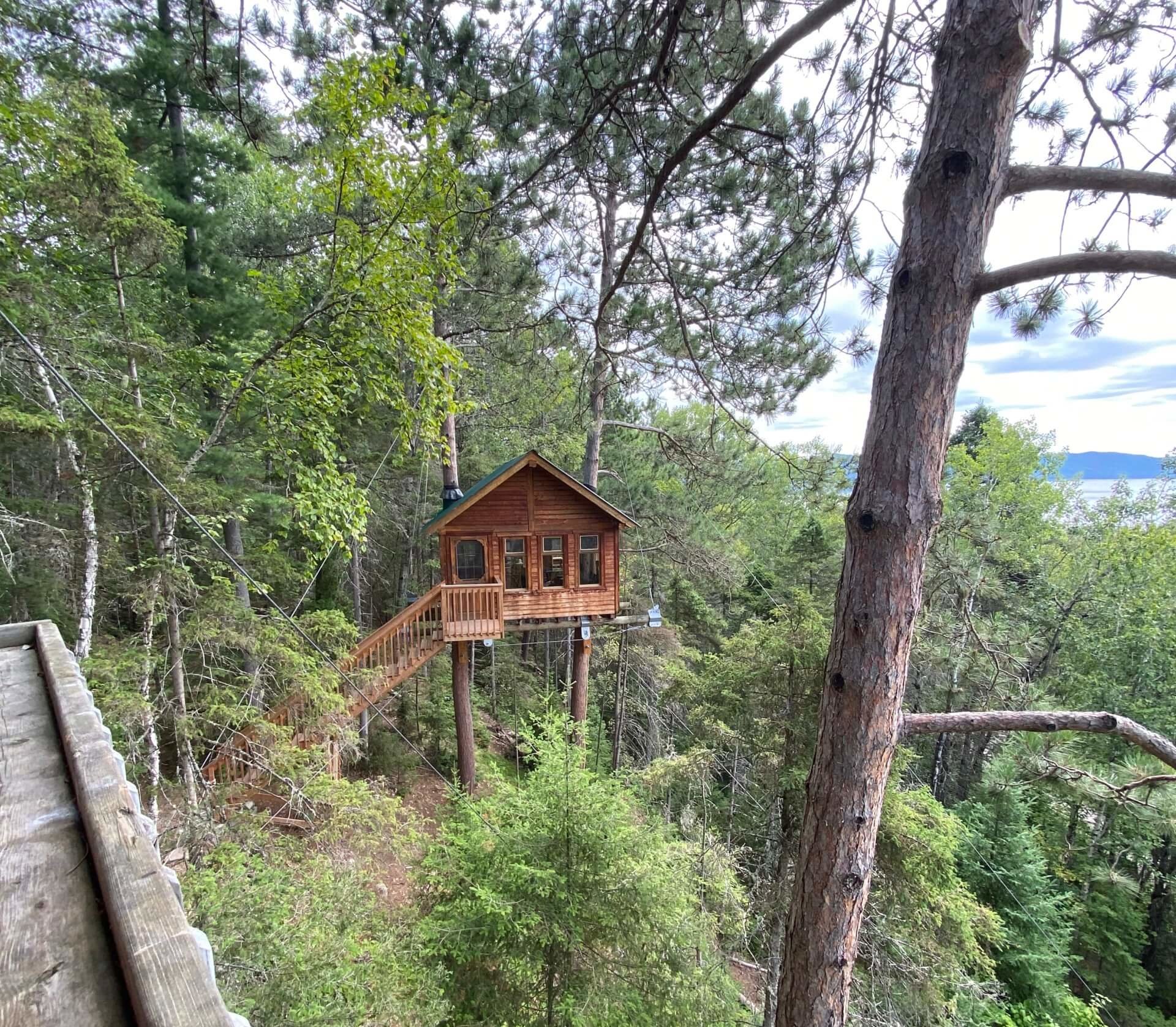
My older kids tried the Young Explorers Fjord Treetop Adventure (which they loved) and my youngest had a ball running around the Bambino course.
Musée du Fjord:
One of our favourite ways to explore the fjord came at the immersive Musée du Fjord in the beautiful Baie des Ha! Ha! We visited in the morning and were shocked to see just how far the tide went out — even though we were so far from the ocean!
Our friendly and knowledgeable guide took us out into the muddy intertidal zone to search for creatures and the kids had an awesome time digging in the sand, identifying creatures and learning about the special features of the fjord.
Back inside the museum, we had hands-on demonstrations where we could touch starfish, an amazing interactive movie that took us beneath the waters of the fjord and some great historical displays. This Signature Canadian Experience is definitely a must if you are in the area.
Baie Éternité

Cruising around the fjord with the huge cliffs overhead and the warm afternoon sun shining down was one of the top experiences we had while visiting Québec. Our captain and guide got us up close to some of the sections and took plenty of time to explain what we were seeing. Flanked by Cap Trinité and Cap Éternité, the bay is breathtaking and seeing it from the water is a must.
How to get to the Saguenay Fjord
The Saguenay Fjord is located along the north shore of the St. Lawrence River approximately 200 km northeast of Québec City. Depending on how much time you have and which parts of the fjord you’d like to explore, there are two ways to get there.
You can travel, as we did, along Route 138 out of Québec City, through the beautiful Charlevoix region, until you reach Baie-Sainte-Catherine at the confluence of the Saguenay Fjord and the St. Lawrence River. Here you will reach the free ferry that takes you across the fjord to Tadoussac on the opposite shore and you can circumnavigate the fjord by travelling north along Route 172, crossing the bridge in the city of Saguenay and then continuing south on Route 170.
If time is short and you’d like to explore the most dramatic part of the fjord at Baie Éternité, you can take Route 170 north from where it intersects with Route 138 in Saint-Simeon (about 35 minutes before Baie-Sainte-Catherine).
For a worry-free road trip, book our Wilderness & Whales excursion or get in touch and we will help you plan a customized getaway.


